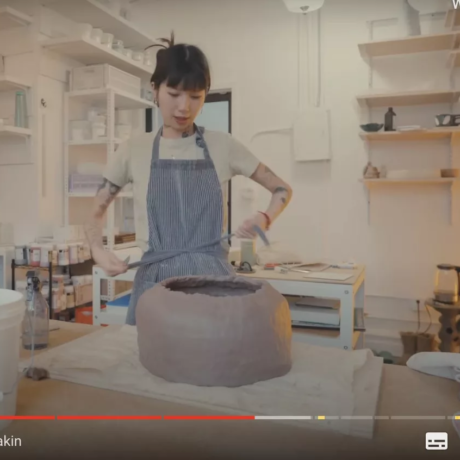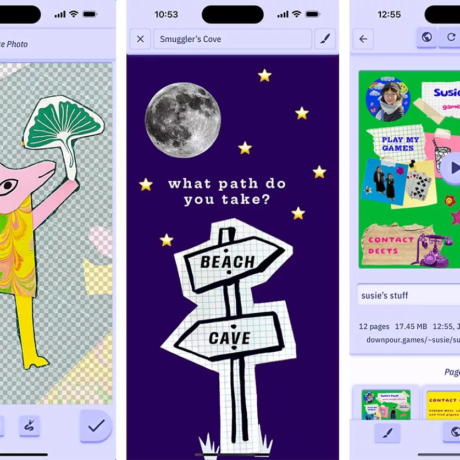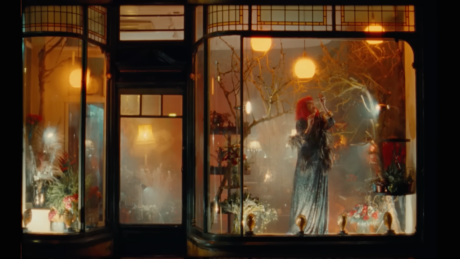
I don’t go outside a lot. Sometimes I don’t want to, sometimes I can’t. Sometimes that gets to me, other times I get over it. Chronic fatigue has challenged my interest in being a productive member of society, which used to be quite the motivating factor in my life, however subliminally I felt it. I never stopped going outside and doing stuff. I loved my job being a girl about town — an international art critic who sweated around Kochi Biennale once upon a time in pursuit of a review, or who travelled to Hong Kong because I thought it would be funny to visit their branch of the White Cube (for reference, I run a website called The White Pube). I was reviewing exhibitions, lecturing about criticism, writing funding applications and yeah, I never stopped.
But I’m indoors most days now. A girl about bed. The world of work doesn’t have the same import, and good — it shouldn’t. It’s almost as if fatigue has liberated me in slow-motion, dragging me under the covers to a more anarchic and horizontal stance. New physical limits have brought to my attention the societal limitations I’d previously accepted. I have to live differently now, and I have to think differently because of my new sick body. And so, whilst it’s a shame I can’t travel to faraway places to see art like I once did, it’s like my Mum used to say when I’d ask for a McDonald’s dinner; there’s food at home. Turns out, there’s culture there too.
I started knitting this year. I found an old picture of my Mum around my age, head down, sat on a couch, knitting from a skein of light blue yarn. I wanted to imagine there’s something else in my blood besides the disorder that keeps me ill on the daily; maybe if I learnt to knit, I’d be good at it too. I ordered one pair of knitting needles and a value size ball of King Cole DK yarn in the shade nougat, and on a day when I could not make it to my desk to work, I opened YouTube on my phone from bed. I played videos at half-speed, repeated them, practiced. I loved it right away. I made fingerless gloves, I made a scrunchie. I made mittens with a thumb gusset and felt like a genius. I found circular needles were less taxing on my body because I could rest my arms lower, and I used some to make the Sophie scarf even though it wasn’t really my style (I mean, whose style is it? It’s appropriate clothing for a lovestruck figure on a late summer evening in the French Riviera who pulls her neckerchief tight when she feels a breeze rolling towards her over the beach. And good for her! But there’s no weather system inside my home!).
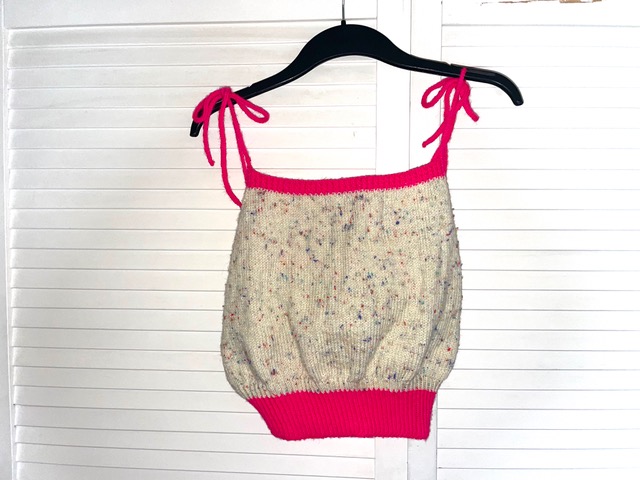
Over the following three months, I made a raglan cardigan using a Yarnspirations tutorial. Raglan’s not particularly my style either, but that’s fine because I have fallen into a trance with knitting. I will knit anything. For me, it’s process for process’s sake. How rare and pure. I’m not banking on some end-product, I just want to practice, build muscle memory. I remember as a kid looking across at my Mum who was knitting while she watched TV; I want to hone this skill enough that I can enjoy the mindlessness that comes with confidence. I suppose I hope that if I can knit without thinking, I’ll be a human on auto-pilot which is very much the opposite experience to the past three years of chronic illness, where I can feel the mechanisms inside me falter. There’s no flow state in my life anymore; everything snags.
What I didn’t expect would come as a bonus of all this knit 1, purl 1 action is further rehabilitation from capitalist pressure, hence the opening primer to this column. It’s been quite the surprise. Because I used to think I had to pack every minute of my self-employed life with work. I never took weekends and it was hard to drag me away from my laptop of an evening; I had to be generating capital or increasing my worth. There is no safety net between my own family and the state if shit hits the fan; I worry that class may well have set my nervous system on edge before chronic illness went in and really messed things up. But essentially, working hard and working constantly has been key to my own survival.
That hasn’t changed. If anything, the stakes are higher now that I am disabled. The difference is I don’t want to feel bad about not making as much money as I used to; I’m too busy feeling bad about literally feeling bad. And this is where knitting comes in. I used to feel saved to some extent by every hour of work I put in — by every single word I placed on the page — but knitting has redirected that capitalist urge to constantly be producing. It is like a dummy to me, a vape in the mouth of somebody trying to quit smoking; I’m still ‘producing’ all of the time. I’m producing a scarf for my boyfriend every night when we watch The Sopranos, even if I haven’t mastered the art of knitting without looking. And yet, in taking two sticks and using them to loop one long string in a way that makes something new — something that has no real purpose besides my own enjoyment of it, whether that’s a scarf for someone else, or a raglan cardigan that I’m not sure I’ll ever wear — I scratch the itch to feel productive without ever attaching financial value to that time. It’s only productive in the sense I’m adding something to the world that’s just sort of nice. Stitch by stitch, I scratch and scratch. I feel proud of myself, creative, fulfilled, and a little bit like an artist —
— which brings me to Lærke Bagger, a Copenhagen-based textile artist and graduate of The Royal Danish Academy of Fine Arts. She’s a cool girl. In pictures, her fringe is short and choppy, and she dresses in her own designs that feature scrap-yarn combinations that cycle through colours, gradients, techniques; Merino, polyester, bulky, sport. She carries crisps in a handbag she knitted that has a houndstooth pattern; she threads beads into her jumper so that stars and shells and flower charms dangle off her stitches. I want to do a studio visit. I want to raid her drawers. I want to play with the Barbies she just used to model her new collection of patterns, all recreated in miniature. She just looks like she is having so much fun, and it comes through in Bagger’s designs. I got her 2022 Prestel-published hardback book Close Knit: 15 Patterns and 45 Techniques from Beginner to Advanced from Europe’s Coolest Knitter for my birthday, and I have been carrying it from bed to the couch and back again ever since it came into my possession.
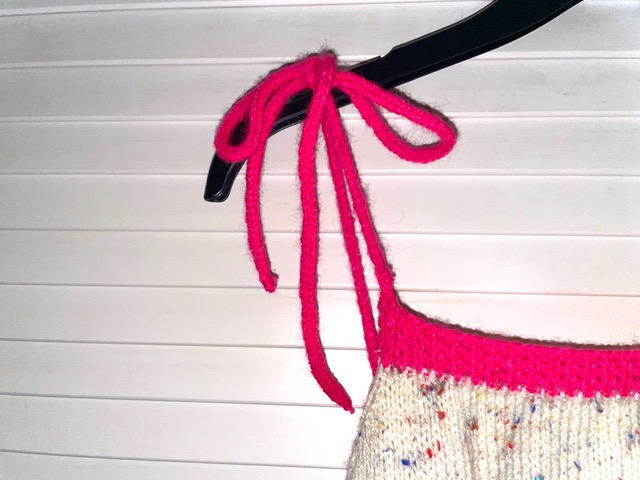
I’ve made The Cute Top, The Nice Slipover, and I’m working on the Carpe Diem jumper. I’ve learnt how to embroider, how to make i-cords, and I have even made myself a pair of socks. It has actually made me feel so good about myself, and so good about coming into this culture; it is almost a relief to discover knitwear designers sell their patterns so that their fans can materialise the ideas as many times as they want to, which is so much more inviting than other fashion outlets who produce clothes in questionable conditions and then sell a limited amount of product at an inaccessible price. For once, this is not a culture that is gate-kept; it is shared in books like Close Knit, in YouTube tutorials, and through websites like Ravelry, continuing a tradition of craft being passed down from person to person. I’ve called my Mum up a few times to check my homework and get advice, and I’m happy that I get to contribute to that tradition now. I’ve been inviting friends over and teaching them what I know. I’ve been sending yarn and needles and my own WhatsApp tutorials to sick friends who can’t meet up. (I’ve also been sending them Lærke Bagger’s Instagram so they too can see how designers are advancing the process, and making clothes we might actually want to wear!).
I don’t know if I ever would have gotten around to knitting if I hadn’t become so grounded in this home base, but I’m glad I found such a lifeline. I know nothing compares to full health but knitting has almost got me making peace with the situation I find myself in. Knitting favours joy over profit, play over work, pacing over rush jobs, and community over isolation. I don’t have to struggle to meet it. I don’t have to fly halfway across the world, or queue up, or pay for tickets. Knitting comes to me; knitting comes with me.
Words by Gabrielle de la Puente of the White Pube.

